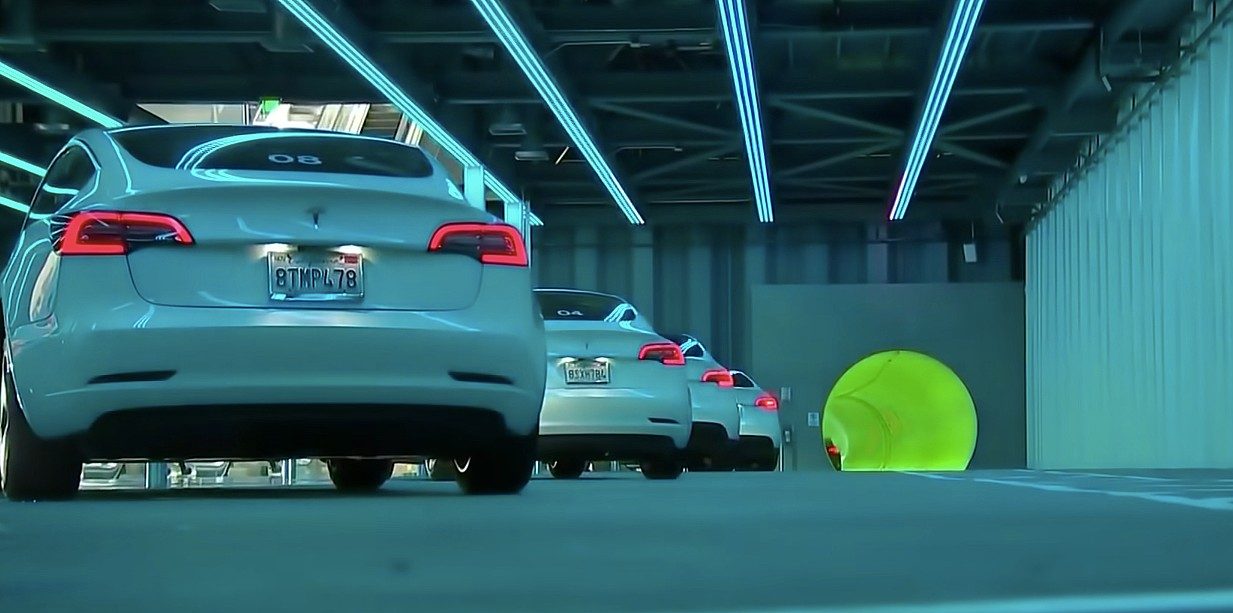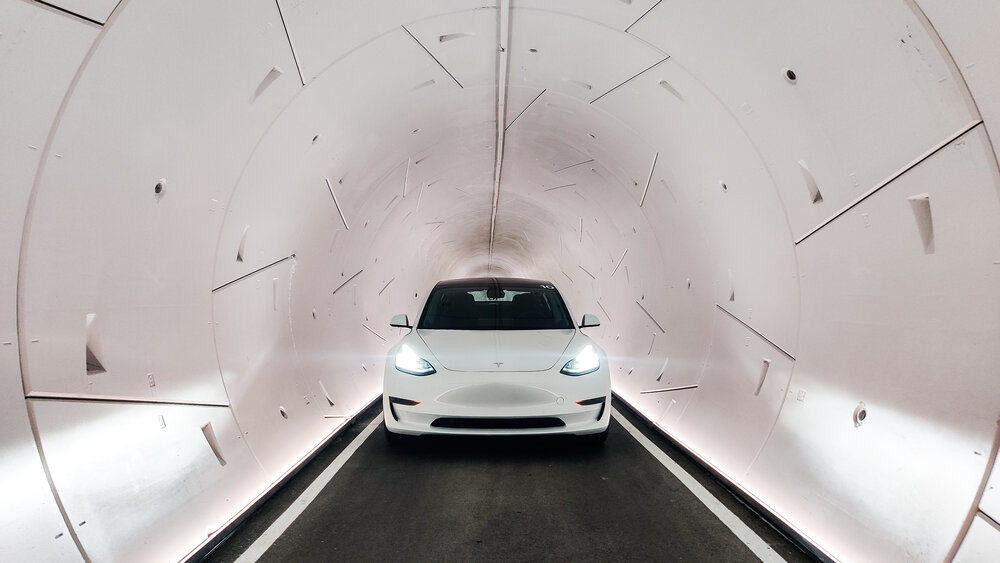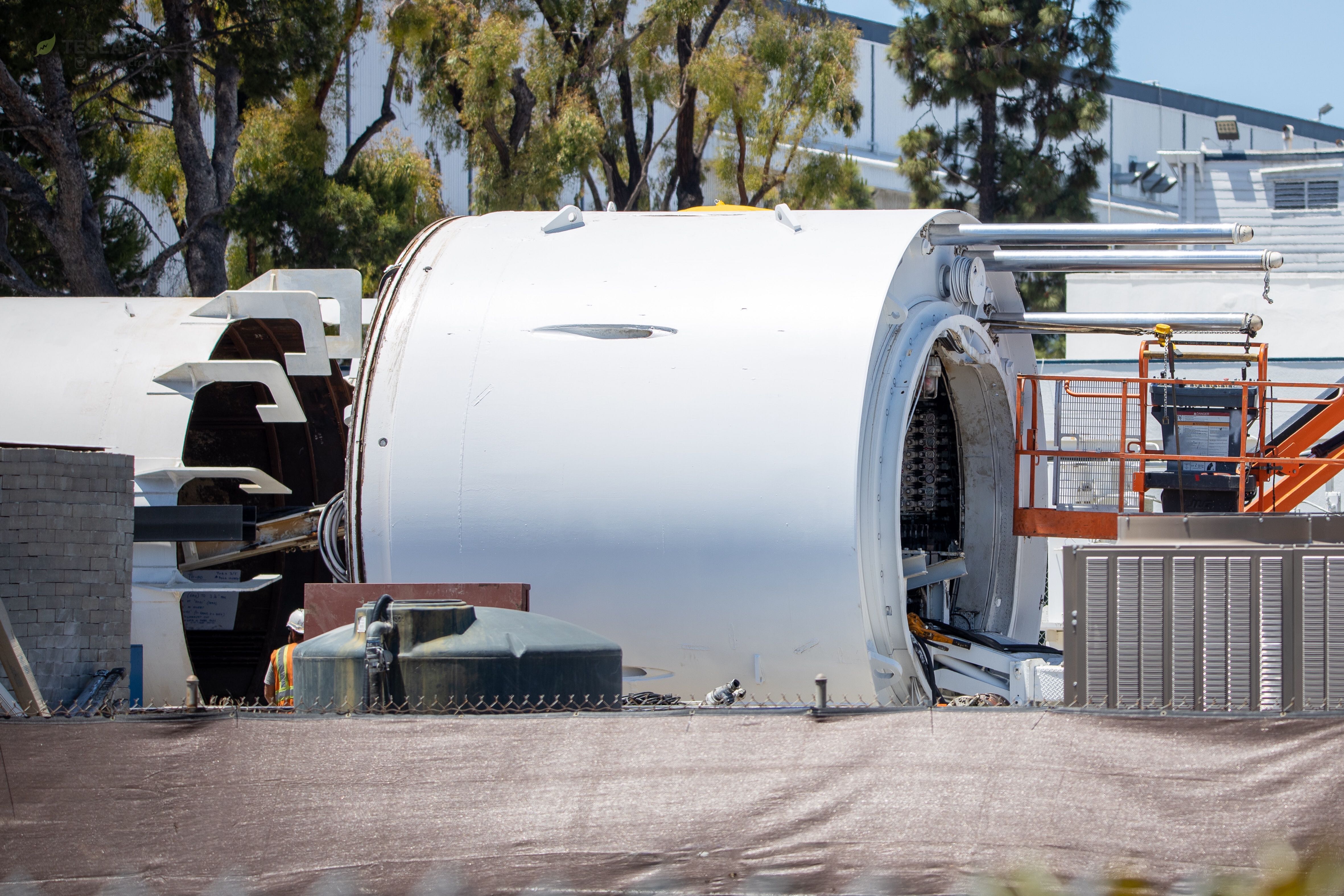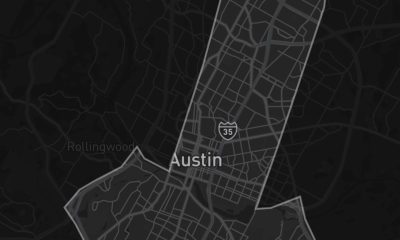

News
The Boring Company’s skeptics need to calm down about the LVCC Loop
The Boring Company’s Las Vegas Convention Center Loop has been completed, and as with every other project from Elon Musk, the initiative has attracted a barrage of criticism from skeptics, some of whom have ridiculed and mocked the transport tunnel system. But just like SpaceX critics who insisted that orbital rockets would never land on a drone ship in the middle of the ocean, or Tesla skeptics who insisted that the Model 3 was a lemon that no one would buy, The Boring Company’s critics may very well be missing a crucial point.
The criticisms surrounding the LVCC Loop are vast, with publications like CNET noting that the system was “disappointing” and “lame” due to its capability to only transport 4,400 people from a fleet of 62 Teslas. VICE described coverage of the LVCC Loop as the “most embarrassing news clip in American transportation history.” Tech publication Futurism argued that the LVCC Loop is “incredibly inefficient.” Even dedicated EV blogs have dismissed the project as “boring.”

And these are just from some publications. A look at the reactions from social media would show numerous users, including the usual band of Tesla and SpaceX skeptics, calling out the LVCC Loop for being yet another example of why Elon Musk is a failure. This became particularly notable after celebrity Kylie Jenner posted a short video of a trip in the Las Vegas tunnels. But amidst the frothing mouths of anti-Elon Musk individuals and those that simply disbelieve the potential of The Boring Company lies one key point—the LVCC Loop, at its current state, is not the end-all and be-all of the tunneling startup’s ambitions.
One thing that Boring Company critics typically forget is the fact that the LVCC Loop’s tunnels are incredibly cheap and quick to build. It’s rarely brought up now, but The Boring Company was one of two companies that were shortlisted for the Las Vegas Convention Center transport system. The other company was Austria-based Doppelmayr Garaventa Group, which proposed a traditional above-ground campus transit system estimated to cost $215 million to complete. The LVCC Loop was completed for $52.5 million. It’s scalable as well, with the LVCC Loop easily being expanded into the larger, more expansive Vegas Loop.
While the Las Vegas Convention Center Loop’s current iteration is a conservative version of Elon Musk’s ambitious tunnel concepts, the core of The Boring Company’s innovation is present in the project. This is because ultimately, The Boring Company’s goal is to make tunneling quicker and more efficient. In this regard, the startup was able to accomplish its goals, and that’s without using its flagship tunnel boring machine. As per previous reports, The Boring Company used Godot+, an upgraded version of its first TBM, to complete the LVCC Loop.
Kylie Jenner showing off The Boring Company tunnel in Las Vegas 👀
🔥 @elonmusk pic.twitter.com/wwN0yc9zIx
— SAINT (@saint) April 14, 2021
The Boring Company is hard at work developing Prufrock, a next-generation, all-electric tunnel boring machine that’s designed to be capable of digging 1 mile per week, or about six times faster than Godot+. Prufrock is designed to begin tunneling within 48 hours of its arrival onsite as well, making its deployments very easy and quick. Machines such as Prufrock, and the incredibly low cost of its tunnels, are The Boring Company’s true disruption.
This is incredibly impressive considering that Godot+ is no slouch. While speaking to German publication Manager Magazin, Martin Herrenknecht, the founder of Herrenknecht AG, dismissed The Boring Company, stating that Elon Musk’s TBMs were only capable of drilling 20 meters in one week. In a statement to Teslarati, an individual familiar with the matter clarified that Herrenknecht’s information was inaccurate, as Godot+ had already managed to dig over 40 meters in one day.

Perhaps the most notable factor to point out amidst the intense criticisms against the LVCC Loop is the fact that the system will most definitely not stay the way it is today. Yes, it only deploys Teslas that are still driven by human drivers for now, but that will soon improve with the use of Autopilot. Yes, the system only has a capacity of 4,400 people per hour with 62 Teslas today, but the vehicles could soon travel quicker, and larger transport pods that hold 16 people per vehicle could improve the system’s capacity. It’s just a bit hard to see these things, or even acknowledge them, if one were already under the notion that The Boring Company is fraudulent, because Elon Musk.
The Boring Company is only getting started. The LVCC Loop could also be considered as a proof of concept, and it will be expanded to other areas in Las Vegas. Improvements to the LVCC Loop, such as the deployment of more Teslas and the use of Autopilot, could also be implemented quickly. Similar tunnels could be built in Florida soon as well. And once Prufrock is deployed, and once other low-cost tunnels are constructed at speeds that have never been seen before, The Boring Company’s skeptics might very well find themselves in the same boat as those who were absolutely certain that orbital rockets could not land on an autonomous barge, or that electric vehicles are simply not feasible.
Don’t hesitate to contact us for news tips. Just send a message to tips@teslarati.com to give us a heads up.
News
Tesla launches in India with Model Y, showing pricing will be biggest challenge
Tesla finally got its Model Y launched in India, but it will surely come at a price for consumers.

Tesla has officially launched in India following years of delays, as it brought its Model Y to the market for the first time on Tuesday.
However, the launch showed that pricing is going to be its biggest challenge. The all-electric Model Y is priced significantly higher than in other major markets in which Tesla operates.
On Tuesday, Tesla’s Model Y went up for sale for 59,89,000 rupees for the Rear-Wheel Drive configuration, while the Long Range Rear-Wheel Drive was priced at 67,89,000.
This equates to $69,686 for the RWD and $78,994 for the Long Range RWD, a substantial markup compared to what these cars sell for in the United States.
🚨 Here’s the difference in price for the Tesla Model Y in the U.S. compared to India.
🚨 59,89,000 is $69,686
🚨 67,89,000 is $78,994 pic.twitter.com/7EUzyWLcED— TESLARATI (@Teslarati) July 15, 2025
Deliveries are currently scheduled for the third quarter, and it will be interesting to see how many units they can sell in the market at this price point.
The price includes tariffs and additional fees that are applied by the Indian government, which has aimed to work with foreign automakers to come to terms on lower duties that increase vehicle cost.
Tesla Model Y seen testing under wraps in India ahead of launch
There is a chance that these duties will be removed, which would create a more stable and affordable pricing model for Tesla in the future. President Trump and Indian Prime Minister Narendra Modi continue to iron out those details.
Maharashtra Chief Minister Devendra Fadnavis said to reporters outside the company’s new outlet in the region (via Reuters):
“In the future, we wish to see R&D and manufacturing done in India, and I am sure at an appropriate stage, Tesla will think about it.”
It appears to be eerily similar to the same “game of chicken” Tesla played with Indian government officials for the past few years. Tesla has always wanted to enter India, but was unable to do so due to these import duties.
India wanted Tesla to commit to building a Gigafactory in the country, but Tesla wanted to test demand first.
It seems this could be that demand test, and the duties are going to have a significant impact on what demand will actually be.
Elon Musk
Tesla ups Robotaxi fare price to another comical figure with service area expansion
Tesla upped its fare price for a Robotaxi ride from $4.20 to, you guessed it, $6.90.

Tesla has upped its fare price for the Robotaxi platform in Austin for the first time since its launch on June 22. The increase came on the same day that Tesla expanded its Service Area for the Robotaxi ride-hailing service, offering rides to a broader portion of the city.
The price is up from $4.20, a figure that many Tesla fans will find amusing, considering CEO Elon Musk has used that number, as well as ’69,’ as a light-hearted attempt at comedy over the past several years.
Musk confirmed yesterday that Tesla would up the price per ride from that $4.20 point to $6.90. Are we really surprised that is what the company decided on, as the expansion of the Service Area also took effect on Monday?
But the price is now a princely $6.90, as foretold in the prophecy 😂
— Elon Musk (@elonmusk) July 14, 2025
The Service Area expansion was also somewhat of a joke too, especially considering the shape of the new region where the driverless service can travel.
I wrote yesterday about how it might be funny, but in reality, it is more of a message to competitors that Tesla can expand in Austin wherever it wants at any time.
Tesla’s Robotaxi expansion wasn’t a joke, it was a warning to competitors
It was only a matter of time before the Robotaxi platform would subject riders to a higher, flat fee for a ride. This is primarily due to two reasons: the size of the access program is increasing, and, more importantly, the service area is expanding in size.
Tesla has already surpassed Waymo in Austin in terms of its service area, which is roughly five square miles larger. Waymo launched driverless rides to the public back in March, while Tesla’s just became available to a small group in June. Tesla has already expanded it, allowing new members to hail a ride from a driverless Model Y nearly every day.
The Robotaxi app is also becoming more robust as Tesla is adding new features with updates. It has already been updated on two occasions, with the most recent improvements being rolled out yesterday.
Tesla updates Robotaxi app with several big changes, including wider service area
News
Tesla Model Y and Model 3 dominate U.S. EV sales despite headwinds
Tesla’s two mainstream vehicles accounted for more than 40% of all EVs sold in the United States in Q2 2025.

Tesla’s Model Y and Model 3 remained the top-selling electric vehicles in the U.S. during Q2 2025, even as the broader EV market dipped 6.3% year-over-year.
The Model Y logged 86,120 units sold, followed by the Model 3 at 48,803. This means that Tesla’s two mainstream vehicles accounted for 43% of all EVs sold in the United States during the second quarter, as per data from Cox Automotive.
Tesla leads amid tax credit uncertainty and a tough first half
Tesla’s performance in Q2 is notable given a series of hurdles earlier in the year. The company temporarily paused Model Y deliveries in Q1 as it transitioned to the production of the new Model Y, and its retail presence was hit by protests and vandalism tied to political backlash against CEO Elon Musk. The fallout carried into Q2, yet Tesla’s two mass-market vehicles still outsold the next eight EVs combined.
Q2 marked just the third-ever YoY decline in quarterly EV sales, totaling 310,839 units. Electric vehicle sales, however, were still up 4.9% from Q1 and reached a record 607,089 units in the first half of 2025. Analysts also expect a surge in Q3 as buyers rush to qualify for federal EV tax credits before they expire on October 1, Cox Automotive noted in a post.
Legacy rivals gain ground, but Tesla holds its commanding lead
General Motors more than doubled its EV volume in the first half of 2025, selling over 78,000 units and boosting its EV market share to 12.9%. Chevrolet became the second-best-selling EV brand, pushing GM past Ford and Hyundai. Tesla, however, still retained a commanding 44.7% electric vehicle market share despite a 12% drop in in Q2 revenue, following a decline of almost 9% in Q1.
Incentives reached record highs in Q2, averaging 14.8% of transaction prices, roughly $8,500 per vehicle. As government support winds down, the used EV market is also gaining momentum, with over 100,000 used EVs sold in Q2.
Q2 2025 Kelley Blue Book EV Sales Report by Simon Alvarez on Scribd
-

 News3 days ago
News3 days agoTesla debuts hands-free Grok AI with update 2025.26: What you need to know
-

 Elon Musk1 week ago
Elon Musk1 week agoElon Musk confirms Grok 4 launch on July 9 with livestream event
-

 Elon Musk5 days ago
Elon Musk5 days agoxAI launches Grok 4 with new $300/month SuperGrok Heavy subscription
-

 News2 weeks ago
News2 weeks agoTesla Model 3 ranks as the safest new car in Europe for 2025, per Euro NCAP tests
-

 Elon Musk2 weeks ago
Elon Musk2 weeks agoxAI’s Memphis data center receives air permit despite community criticism
-

 News5 days ago
News5 days agoTesla begins Robotaxi certification push in Arizona: report
-

 Elon Musk2 weeks ago
Elon Musk2 weeks agoTesla reveals it is using AI to make factories more sustainable: here’s how
-

 Elon Musk2 weeks ago
Elon Musk2 weeks agoTesla scrambles after Musk sidekick exit, CEO takes over sales













